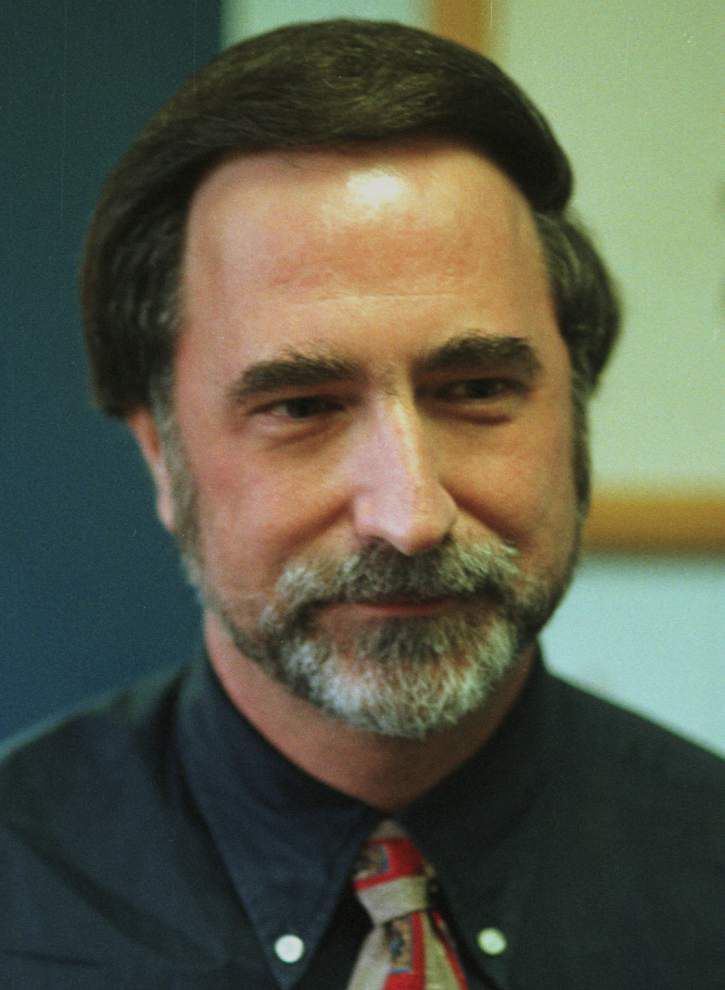

Richard J. Schmidt is an American former physician who was convicted by a Louisiana court in 1998 of attempted murder. The case marked the first time in forensic history that viral DNA was used to prove a link between two people with Human Immunodeficiency Virus (HIV) or Acquired Immune Deficiency Syndrome (AIDS) in a criminal trial.
Medical Detectives – Geheimnisse der Gerichtsmedizin
Januar 1995: Krankenschwester Janice Trahan weist verschiedene Anzeichen einer Grippe auf. Von einem Gynäkologen erfährt sie, dass sie HIV-positiv und dazu schwanger ist. Als einziger Überträger kommt ihr Arzt, Dr. Richard Schmidt, in Betracht. Mit ihm hat Janice seit zehn Jahren ein Verhältnis. Beide waren anfangs verheiratet, doch während Janice sich hat scheiden lassen, hat Dr. Schmidt diesen Schritt nicht gewagt. Ihr gemeinsamer Sohn Jeffrey ist vier Jahre alt. Janices Versuche, die Besuche bei Dr. Schmidt zu beenden, waren allesamt gescheitert. Er hat damit gedroht, Nacktfotos von ihr in ihre Abteilung zu hängen, notfalls auch die Männer, mit denen sie ausging, zu töten. Als Janice über längere Zeit chronisch müde und lethargisch war, hat Dr. Schmidt ihr ein Vitamin-B-12-Präparat gespritzt. Janice erinnert sich an einen Tag im August, als er ihr eine extrem schmerzhafte Injektion gab. Im Nachhinein ist sie davon überzeugt, dass es sich um die Spritze gehandelt haben muss, durch die sie das HIV-Virus injiziert bekam. Die Ermittlungsbeamten konzentrieren sich auf die Patientenliste Dr. Schmidts und werden schnell fündig.
Frühjahr 1999: Die Ballards führen ein harmonisches Familienleben in Texas. Dann jedoch leidet zunächst der dreijährige Sohn Reese an spontaner Atemnot und Nervenschäden. Kurz darauf kann sich sein Vater Ron bei der Arbeit nicht mehr konzentrieren. Sein Kurzzeitgedächtnis fällt von einem auf den anderen Tag völlig aus: Nicht nur, dass er sich nicht mehr erinnern kann, wo er seinen Wagen geparkt hat, er weiß nach Minuten nicht einmal mehr, welchen Wagen er fährt. Neurologische Tests zeigen einen eklatanten Verfall in Rons Wahrnehmungsvermögen auf.
Als Letzte im Bunde spuckt Reeses Mutter Melinda auf einem Flug Blut. Glücklicherweise sitzt mit Bill Holder ein Fachmann auf dem Gebiet der ‘Wohnungsgifte’ neben ihr. Ihm erzählt sie von den Krankheitserscheinungen ihrer Familie – und auch von dem Wasserschaden einen Monat zuvor. Bill untersucht daraufhin die Wohnung. Sein Begleiter, ein Professor für Mikrobiologie und Immunologie, hält es nicht einmal 30 Minuten im Haus aus. Auf dem Weg hinaus kollabiert er. Die Ergebnisse der toxikologischen Proben zeigen einen extrem hohen Belastungsgrad an Sporen – das Haus war buchstäblich durchtränkt und übersät von ihnen. Bekijk deze aflevering van Medical Detectives – Geheimnisse der Gerichtsmedizin hier terug.
Richard J. Schmidt
From Wikipedia, the free encyclopediaJump to navigationJump to search
Richard J. Schmidt is an American former physician who was convicted by a Louisiana court in 1998 of attempted second degree murder, for injecting his girlfriend with HIV. The case marked the first time in forensic history that viral DNA was used to prove a link between two people with Human Immunodeficiency Virus (HIV) or Acquired Immune Deficiency Syndrome (AIDS) in a criminal trial.
In 1994 Schmidt used a sample of blood taken from one of his HIV-positive patients to inject into his lover and former colleague, Janice Trahan, infecting her with HIV. Six months later Ms. Trahan, a nurse, was diagnosed with HIV. Convinced that Schmidt had infected her after a suspiciously fleeting late-night visit to give her a “Vitamin B” injection, Ms. Trahan had her ex-husband and former boyfriends tested. All were shown to be negative for HIV—results which led Lafayette, Louisiana police to further investigate her claims.
HIV is a fairly fragile virus, and lasts for only a few hours outside the human body. Detectives examining hospital records found that Schmidt had taken blood from one patient that night, but had never sent the blood to the lab. The absence of laboratory testing identification references against this patient’s name led to police visiting the man who readily disclosed that he had AIDS and that he had been called in for a blood test by Schmidt on the evening in question. The forensic challenge at that point was to match the DNA from the virus itself from the patient to the victim, something that had never been done before. HIV DNA was collected from the victim, from the putative patient source, and from thirty-two other unrelated, HIV-positive individuals living in the same metropolitan area. Scientists concluded that of all the samples they tested, the two viruses’ DNA from the victim and the patient matched almost exactly, even with HIV’s potential to mutate very rapidly.
It was further disclosed at trial that the victim had also acquired Hepatitis C around the same time. Evidence from Schmidt’s patient records showed that a blood sample was taken from a patient with Hepatitis C the day before the HIV-infected sample was taken. The Hepatitis C sample was similarly not matched with any laboratory references – these two were the only such omissions found in Schmidt’s patient records.
In 1998 Schmidt was sentenced to 50 years for attempted second degree murder.
In 2015, after 17 years served of his 50-year sentence, Schmidt was unanimously denied parole by the three-member State Board at a June hearing in Baton Rouge.
In media
- This case was shown on the television series Forensic Files in the ninth episode of its eighth season, entitled “Shot of Vengeance.”[
Hier een andere Dr. Steven K. Schmitt https://www.ama-assn.org/residents-students/specialty-profiles/what-its-be-infectious-disease-shadowing-dr-schmitt
